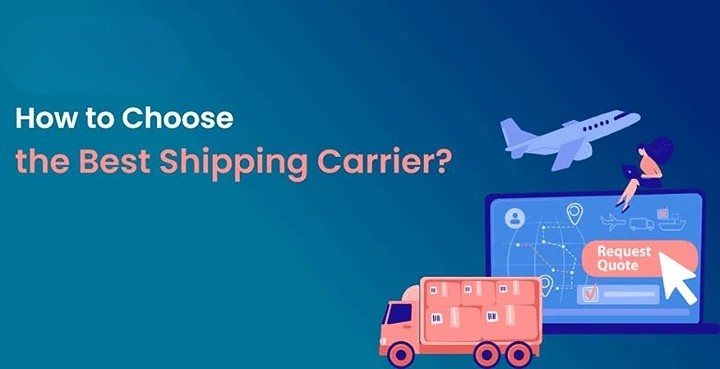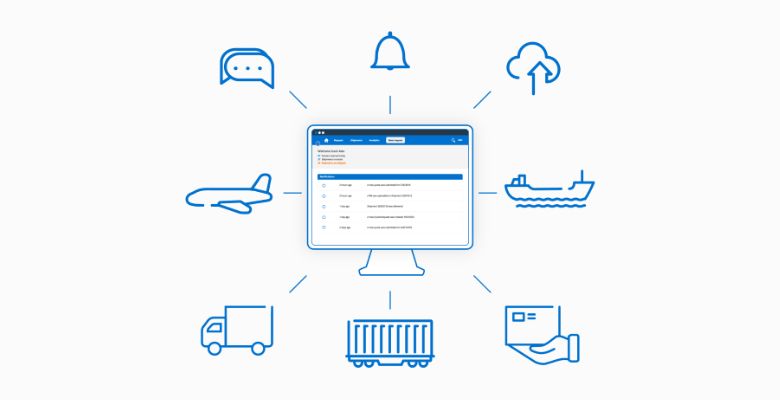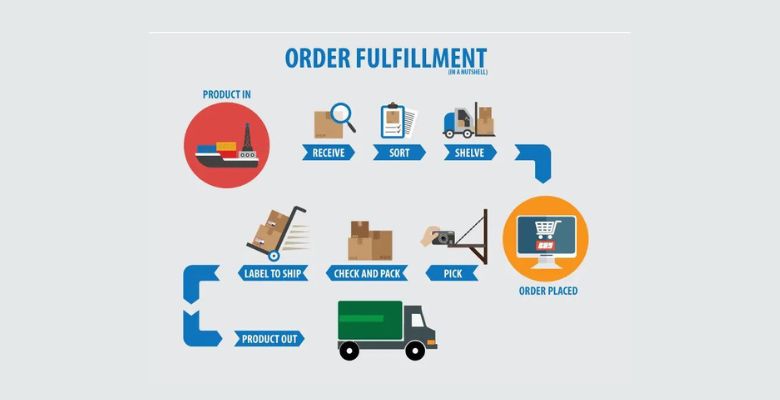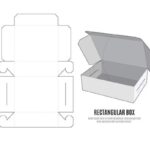Shipping can make or break a small business. Whether you’re struggling with high costs, slow delivery times, or keeping customers happy, finding the right shipping strategy is crucial. In this guide, we’ll break down the major shipping carriers, share tips for reducing costs, and explore advanced shipping strategies to help you grow your business.
Understanding Small Business Shipping
Are you looking to reduce shipping costs while keeping your customers satisfied? Efficient shipping is essential for small businesses, especially in today’s competitive market. The right shipping strategy can significantly impact your profitability.
Common Shipping Challenges:
- High shipping costs: These can eat into profit margins.
- Delivery speed: Customers expect fast, reliable delivery.
- Customer preferences: Meeting varying customer demands for specific carriers or shipping options.
The goal? Lower costs, improve delivery speed and enhance customer satisfaction.
Major Shipping Carriers for Small Businesses
When selecting a shipping carrier for your small business, it’s important to remember that there’s no universal solution. Each carrier has its strengths, limitations, and specialized services. To help you make the best decision, let’s break down the primary shipping options available for small businesses.
USPS (United States Postal Service)
USPS is an ideal choice for businesses shipping smaller, lightweight packages domestically. It offers a range of affordable and convenient services. For instance, tools like Click-N-Ship allow business owners to easily manage and print shipping labels from home, eliminating the need for frequent trips to the post office. Additionally, free package pickups further enhance the convenience of shipping with USPS, making it a popular option for low-volume businesses.
Pros:
- USPS offers some of the most affordable rates for small and light packages.
- It provides extensive domestic coverage, ensuring reliable delivery within the U.S.
Cons:
- Limited tracking capabilities can be a drawback, particularly for businesses prioritizing real-time updates.
- USPS is not as competitive for international shipping, whereas other carriers may offer better rates and services.
Read More: Does UPS Accept USPS Packages? A Complete Guide to Avoid Confusion
FedEx
FedEx is a strong option if your business requires shipping perishables or fragile items. Its Small Business Program is tailored to startups and offers various rewards, making it a smart choice for businesses looking for reliable service and special features. FedEx’s standout offering is temperature-controlled shipping, which is perfect for products that require specific conditions, such as perishable goods or sensitive electronics.
Pros:
- FedEx is known for its fast and reliable shipping, with robust tracking options that provide real-time updates.
- It offers specialized services, such as temperature control, that cater to more specific shipping needs.
Cons:
- FedEx generally comes with higher shipping costs, especially for smaller packages when compared to USPS, which can affect businesses with limited shipping budgets.
Read More: Understanding FedEx Box Sizes: A Comprehensive Guide
UPS
UPS stands out for its ability to manage returns and optimize supply chains, making it an excellent choice for businesses handling large volumes of shipments. The UPS Small Business Program provides tools to schedule pickups and manage returns effortlessly. Additionally, UPS offers virtual brainstorming sessions where small businesses can collaborate with UPS experts to optimize their shipping processes and improve their supply chain management.
Pros:
- UPS is well-regarded for handling bulk shipments and managing returns, which is a huge plus for ecommerce businesses dealing with a high volume of orders.
- It has a reputation for excellent customer support, helping businesses troubleshoot issues quickly.
Cons:
- For businesses with lower shipping volumes, UPS’s shipping rates can be higher, making it less cost-effective for occasional or low-volume shipments.
DHL
For businesses that need to ship internationally, DHL is the top choice. Specializing in express deliveries and global shipping, DHL is perfect for small businesses with a global customer base. DHL also boasts efficient customs processes and offers real–time shipment tracking, which is essential for international shipments that may face customs delays or other obstacles.
Pros:
- DHL is the best carrier for international shipments, offering fast, reliable delivery across the globe.
- It excels in customs handling, ensuring that international orders get processed and shipped as smoothly as possible.
Cons:
- While DHL is fantastic for international deliveries, it tends to be expensive for domestic shipments, making it a less attractive option for businesses that primarily ship within the same country.
Choosing the Right Shipping Carrier

Selecting the right shipping carrier for your business is a critical decision that can significantly affect your operations and customer satisfaction. Whether you prioritize cost, delivery speed, or specialized services, the carrier you choose must align with your specific business needs. Here are the key factors to consider when making your decision:
1. Order Volume
How many shipments do you handle daily, weekly, or monthly? This is a fundamental question when choosing a shipping carrier. If your business ships a small volume of lightweight packages, USPS might be your best option due to its affordable rates and flexible services for smaller businesses. On the other hand, companies that manage higher shipping volumes may find that FedEx or UPS provide better discounts and tailored services for bulk shipments. These carriers often offer loyalty programs or rate reductions for businesses with consistent, high-volume shipping needs.
For example, FedEx’s Small Business Program offers rewards and specialized support for businesses that ship frequently, while UPS provides bulk handling solutions for larger shipments. High-volume shippers can also negotiate better rates with these carriers, something less feasible with lower-volume shipments.
2. Delivery Speed
Are your customers expecting fast shipping, or are they comfortable with slower, more cost-effective options? Delivery speed is often a determining factor in which carrier to choose. If next-day or two-day shipping is essential for your business, FedEx and UPS are known for their fast and reliable services. FedEx, in particular, specializes in express deliveries, making it ideal for businesses requiring expedited shipping.
If speed is not the top priority and you’re more focused on minimizing costs, USPS might be a better choice for ground shipments. This is especially true for lightweight packages traveling domestically, where delivery within 3–5 business days might suffice. Understanding your customers’ expectations for delivery speed can help you select the carrier that best balances speed and cost.
3. Packaging Needs
Different products require different levels of care in packaging and shipping. Are you shipping fragile, oversized, or temperature-sensitive items? If so, not all carriers will meet your needs equally. For businesses that regularly ship perishables or fragile items, FedEx offers temperature-controlled shipping and specialized handling for delicate products, which can ensure your items arrive safely and in optimal condition.
In contrast, if your shipments are standard-sized and non-perishable, UPS and USPS offer robust packaging services for bulk and domestic shipments, often at a lower price point. For businesses shipping oversized items, UPS is also well-equipped to handle large or heavy packages, making it a great option for eCommerce businesses dealing with furniture, machinery, or other bulky products.
4. Geographic Shipping Zones
Where are your customers located? Shipping distance plays a crucial role in determining both shipping cost and speed. Carriers divide shipping into zones, and the greater the distance between your location and your customer, the higher the shipping cost will be. For example, USPS offers competitive rates for local or short-distance shipments within the same shipping zone, making it a good choice for businesses that serve nearby customers.
However, if your business ships internationally or to more distant zones, DHL is the go-to option, known for its global reach and efficient international shipping services. DHL offers a seamless experience for businesses dealing with customs, international regulations, and multi-country shipping. It’s worth noting that DHL’s domestic services may not be as cost-effective for U.S.-based shipments, but for international customers, it excels.
5. Tracking Options
Customers increasingly expect transparency in their shipping experience, and tracking is a critical component of that. Reliable tracking not only helps you keep customers informed but also builds trust. FedEx and UPS provide highly detailed tracking features, allowing businesses and customers to monitor a shipment in real time from dispatch to delivery. This is particularly useful for high-value or time-sensitive shipments.
USPS offers tracking, but it is often less comprehensive compared to private carriers like FedEx or UPS. However, for businesses shipping low-cost, low-risk products, USPS tracking might be sufficient. If tracking and shipment updates are integral to your customer service, then choosing a carrier with strong tracking capabilities, like UPS or FedEx, may be crucial for your business.
Multi-Carrier Shipping Strategy

In today’s competitive shipping environment, relying on a single carrier may limit your flexibility and cost savings. A multi-carrier shipping strategy enables small businesses to harness the strengths of different carriers, catering to specific shipping needs. By incorporating multiple carriers into your logistics process, you can offer a more tailored service to your customers while simultaneously reducing your overall shipping costs.
Benefits of Using Multiple Carriers
Negotiation Power
When using multiple carriers, you gain more leverage in negotiations. Carriers are well aware that they are competing for your business, which can encourage them to offer better rates and more favorable terms. For example, a FedEx representative might provide a better discount if they know you’re also considering UPS. Having more than one option on the table allows you to negotiate better deals across the board, ensuring that you’re getting the best rates for each type of shipment.
Flexibility
By using multiple carriers, you have the flexibility to cater to customer preferences. Some customers might prefer a particular carrier because of their delivery speed, reputation, or tracking options. Offering a variety of shipping choices means you can accommodate individual customer needs, which leads to increased satisfaction and loyalty. Additionally, having access to different carriers ensures that you can choose the best provider for each specific shipment, whether it’s based on price, speed, or service quality.
Risk Mitigation
Relying solely on one carrier can be risky, especially during peak shipping seasons or when unexpected delays occur. A multi-carrier strategy helps to mitigate these risks by ensuring you have a backup in case one carrier faces delays, disruptions, or service limitations. For instance, if your primary carrier is experiencing issues due to weather or operational constraints, you can seamlessly switch to an alternative without delaying your customers’ orders.
Tips to Reduce Shipping Costs

Reducing shipping costs doesn’t necessarily mean compromising on quality. There are numerous strategic approaches you can take to cut expenses while still offering excellent shipping services to your customers. Here’s how:
Packaging Solutions
Packaging is often an overlooked area where you can save significant money. By optimizing your packaging process, you can reduce your overall shipping expenses.
- Reuse packaging: One effective way to cut costs is by reusing boxes and materials where possible. Not only does this reduce waste, but it also saves on purchasing new materials.
- Buy in bulk: Purchasing packaging materials like boxes, tape, and padding in larger quantities can lead to substantial cost savings, especially when vendors offer volume discounts.
- Right-size your packaging: Avoid using oversized boxes that increase dimensional weight charges. Choosing appropriately sized packaging for your items can prevent unnecessary charges for shipping large, mostly empty packages.
| Packaging Cost-Saving Tips | Benefit |
| Reuse packaging | Lower costs, eco-friendly |
| Buy in bulk | Take advantage of discounts |
| Right-size your packaging | Reduce shipping fees on oversized items |
Negotiating Rates
Negotiating rates with carriers can be one of the most effective ways to lower shipping costs, especially as your shipping volume grows.
- Benchmarking: Compare your shipping rates with similar businesses in your industry. By doing so, you can identify opportunities to negotiate more competitive pricing based on your shipping volume or package types.
- Cross-Modeling: Understanding where carriers generate the most profit (such as on certain routes or services) can give you an edge when negotiating. For example, if your shipments consistently fall within specific profitable parameters for the carrier, they may be willing to reduce costs while maintaining their profitability.
By regularly reviewing your shipping data and staying informed about industry trends, you can approach carriers with specific data points that help you secure better shipping rates.
Free Shipping Strategies
Offering free shipping can attract more customers and increase sales, but it doesn’t have to cut into your profits if implemented strategically. Here are two popular approaches:
- Include shipping costs in product prices: By building shipping costs into the base price of your products, you can offer “free shipping” without reducing your margins. This method works well for businesses with higher margins or items where the shipping cost is relatively low.
- Free shipping on orders over a certain value: Encouraging customers to reach a spending threshold to qualify for free shipping is another effective tactic. For example, offering free shipping on orders over $50 incentivizes customers to purchase more, which can increase your average order value and offset the cost of shipping.
Common Shipping Challenges and Solutions
Shipping is a crucial aspect of any business, but it comes with challenges that can affect both your bottom line and customer satisfaction. Understanding these issues and proactively addressing them can help you optimize operations. Below, we explore two of the most common shipping challenges and provide actionable solutions to overcome them.
High Shipping Costs
Shipping can quickly become a major expense, especially for small businesses. Rising shipping fees and surcharges can erode profit margins, but there are several ways to mitigate these costs without sacrificing quality:
- Compare Multiple Carriers: Don’t stick with just one shipping provider. Shop around and compare rates between USPS, FedEx, UPS, and DHL to find the most cost-effective option for each specific shipment. Rates can vary widely depending on package size, weight, and destination. Leverage a multi-carrier strategy to get the best deal for different shipping needs.
- Strategic Free or Discounted Shipping: Offering free shipping is a great way to attract customers, but you don’t need to offer it across the board. Instead, offer free shipping on orders over a certain value, encouraging customers to purchase more to meet the threshold. You can also consider including shipping costs in product pricing to offer “free shipping” without cutting into your profit margins.
- Utilize Flat-Rate Shipping: Carriers like USPS offer flat-rate boxes, which can be more cost-effective when shipping heavier items. By taking advantage of these services, you can better predict and control shipping expenses, even for larger or heavier packages.
Delayed Deliveries
Late deliveries can damage your brand’s reputation and frustrate customers, leading to poor reviews and decreased loyalty. To avoid delays and ensure timely shipments, consider the following strategies:
- Choose Carriers with Reliable Tracking: Not all carriers offer the same level of tracking. Carriers like FedEx and UPS provide robust tracking options that give you and your customers real-time updates on shipments. Choosing a carrier with detailed tracking can help prevent unexpected delays and improve communication with your customers.
- Explore Third-Party Fulfillment Centers (3PL): Delays often occur because of shipping from a single, centralized location. By partnering with third-party logistics (3PL) providers, you can utilize multiple fulfillment centers. 3PLs strategically place inventory closer to your customers, reducing transit times and shipping costs. This not only speeds up delivery but also mitigates risks of regional disruptions, such as weather-related delays.
Advanced Shipping Strategies

As your business grows, more sophisticated shipping strategies become essential to handle increased complexity and scale. Here are a few advanced methods that can take your shipping game to the next level.
Using Third-Party Logistics Providers (3PL)
For scaling businesses, outsourcing shipping to a 3PL provider can save time, reduce costs, and improve overall efficiency. Here’s how:
- Lower Shipping Costs: 3PL providers usually have established relationships with major carriers and can offer negotiated shipping rates. These discounted rates can significantly reduce your shipping expenses, especially for higher volume shipments.
- Faster Deliveries: By using multiple fulfillment centers located in strategic areas, 3PL providers can ship products from the location closest to your customer. This reduces transit time and minimizes shipping zones, helping you meet customer expectations for faster deliveries without increasing shipping costs.
Supply Chain Optimization
An optimized supply chain ensures smoother operations from procurement to delivery. Streamlining your supply chain can lead to more efficient shipping processes, reduced errors, and lower costs. Here are two critical ways to achieve this:
- Improve Communication Between Teams and Vendors: Breakdowns in communication between internal teams and external vendors can lead to delays and errors in shipping. Implementing tools that facilitate clear, real-time communication between all stakeholders ensures everyone is on the same page, reducing the likelihood of errors or miscommunications.
- Implement Warehouse Management Systems (WMS): A Warehouse Management System helps track inventory, manage orders, and oversee shipments, ensuring that products move seamlessly through the supply chain. These systems improve visibility, reduce manual errors, and ensure that the right products are sent to the right locations on time. WMS solutions can also integrate with shipping carriers, helping you automate shipping label creation and order tracking.
Blockchain in Shipping
Blockchain technology is revolutionizing many industries, and shipping is no exception. By adding blockchain to your shipping process, you can increase transparency and accountability, offering a more secure and reliable shipping experience for both your business and your customers.
- Track Products with Immutable Records: Blockchain creates a digital ledger of every step in your product’s journey, from the warehouse to the customer’s doorstep. This offers unmatched transparency, making it easier to identify and resolve issues.
- Improve Trust and Accountability: With blockchain, every transaction is permanently recorded and visible to all parties involved. This enhances trust between suppliers, carriers, and customers, as all parties can access real-time information about the status of a shipment.
Conclusion
Choosing the right shipping strategy is essential for small business success. By selecting the best carrier and implementing a multi-carrier strategy, you can reduce costs, speed up deliveries, and improve customer satisfaction.
Ready to optimize your shipping strategy? Start comparing carriers today, negotiate better rates, and explore advanced strategies like 3PL and blockchain to stay ahead of the competition.
Struggling with high shipping costs? Visit 99 designs packaging to find the best shipping solutions for your small business. Reduce costs, improve efficiency, and grow your business with better shipping strategies!





